A University of Maryland atmospheric scientist has spent his career, in part, studying aerosol impacts on clouds, precipitation, and climate
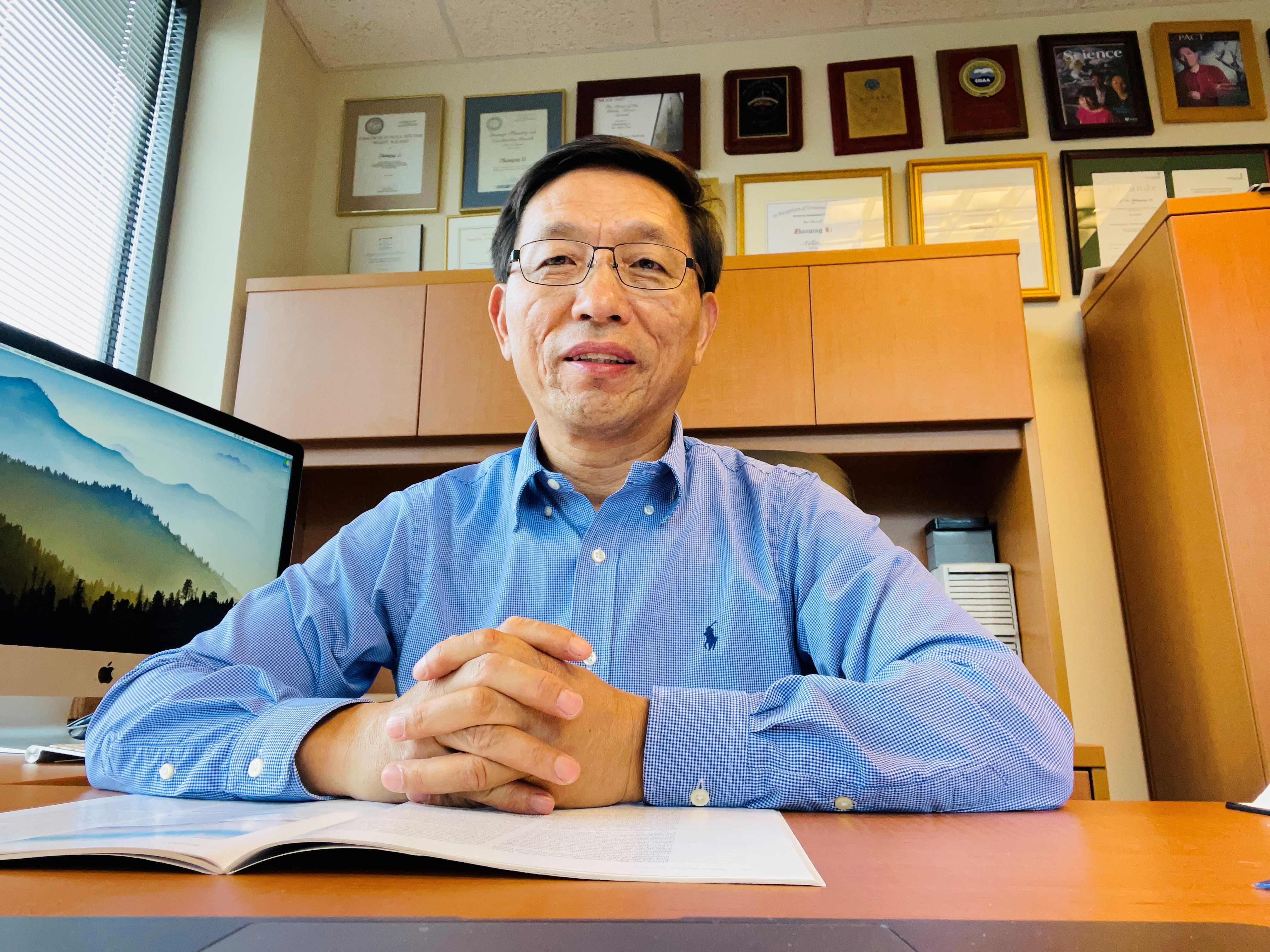
The heartland of China, some say, is landlocked Henan Province. Bounded by mountains to the west and bisected by the Yellow River, this is where farmers grow wheat, sesame, and rice. Summers are humid and wet, drenched by the East Asian monsoon. Winters are dry and cold, swept by winds cycling in from Siberia.
Henan is an ideal place to grow up if weather interests you―especially if you live near a meteorology station. That was the boyhood circumstance of Zhanqing Li, now a professor of atmospheric science at the University of Maryland, College Park (UMD).
“I was fascinated by clouds,” says Li of his rural life in those days near Luoyang, which had been the capital of ancient China over a span of 13 dynasties. “I always wondered: What made a cloud? Why do we have rain sometimes―but most of the time, we don’t have rain?”
Watching the crew at the met station, he remembers thinking: “That’s a very fine job to have.”
Today, among many other accomplishments, Li oversees a research project on how marine low clouds are dynamically and thermodynamically linked to the sea surface in the Southern Ocean.
The tops of marine low clouds reach no higher than 3 kilometers (about 1.8 miles). These clouds depend on the ocean surface for the energy, water, and the cloud condensation nuclei that allow them to form and develop.
The project is funded by the Atmospheric System Research (ASR) program at the U.S. Department of Energy (DOE). It pivots mostly on data from DOE’s Atmospheric Radiation Measurement (ARM) user facility. Especially important for Li is a 2017―2018 ARM field campaign called Measurements of Aerosols, Radiation, and Clouds over the Southern Ocean (MARCUS).
The ASR project has motored right along, thanks in large part (Li says) to a prolific string of publications led by Youtong Zheng, Li’s former PhD student who is now at Princeton University. In all, Li’s ASR project has inspired 13 peer-reviewed publications, with a 14th in the submittal process.
The latest paper to come out of the ASR project, in Geophysical Research Letters, provides the first observational evidence that a fast-rising parcel of air below a cloud remains similarly fast at the cloud base.
That answers a long-standing question on the link between sub-cloud turbulence and cloud-base updraft velocity. The study leverages lidar data from another ARM asset, the Southern Great Plains (SGP) atmospheric observatory, a midwestern U.S. fixed site that has collected measurements for nearly 30 years.
Exploiting MARCUS Data
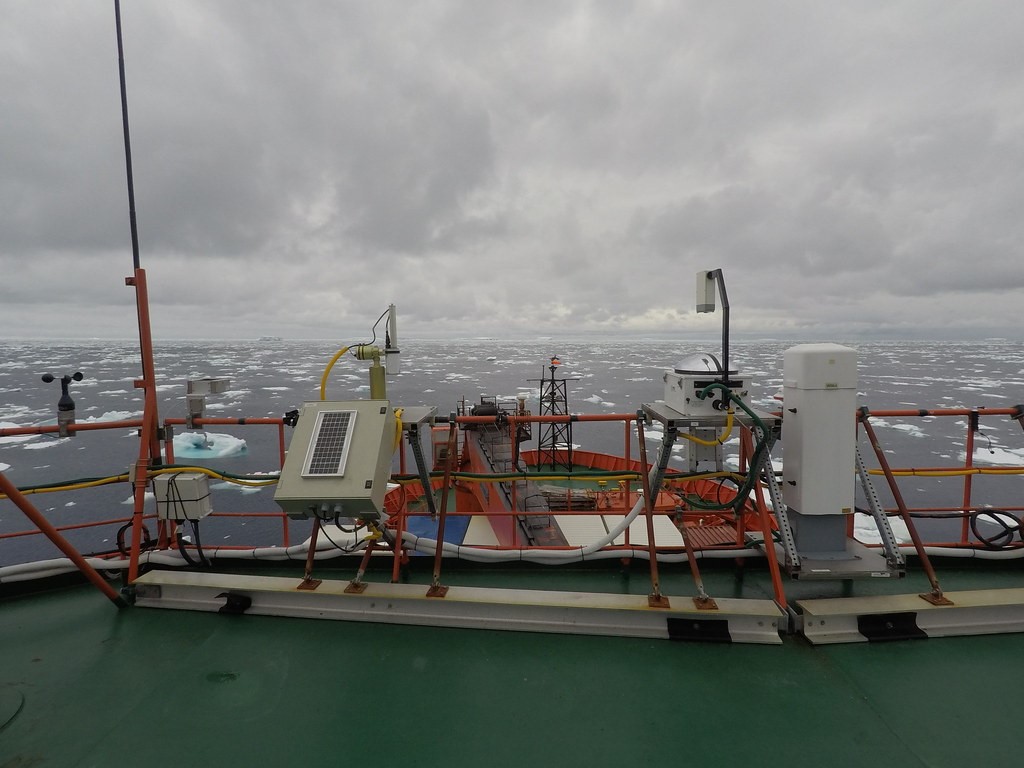
Li says the way low clouds work in the Northern Hemisphere is much better understood than are the mechanisms that drive clouds in the remote Southern Ocean. There, most climate models underestimate cloud cover.
To close this knowledge gap, Li’s ASR project set out to exploit MARCUS data, combined with large eddy simulations (LES).
LES are a computationally efficient way to model the complexity of turbulence in the atmosphere.
Project researchers wanted to find out what conditions cause marine low clouds to couple or decouple from the ocean surface. They also investigated how such linkages regulate two things: the transport of aerosols (tiny particles in the air) and cloud droplet number concentration, or Nd.
Nd is an important parameter in models because it strongly influences cloud processes and optical properties. With aerosols, the mass and size of Nd affect incoming and outgoing solar radiation. That makes it an important player in modeling Earth’s energy budget.
Li’s ASR project team also asked: If you take cloud-surface coupling and add in changes to Nd, what is the effect on cloud cover?
Since the project’s start in 2018, says Li, “a lot of progress has been made.”
Warm-Air Advection
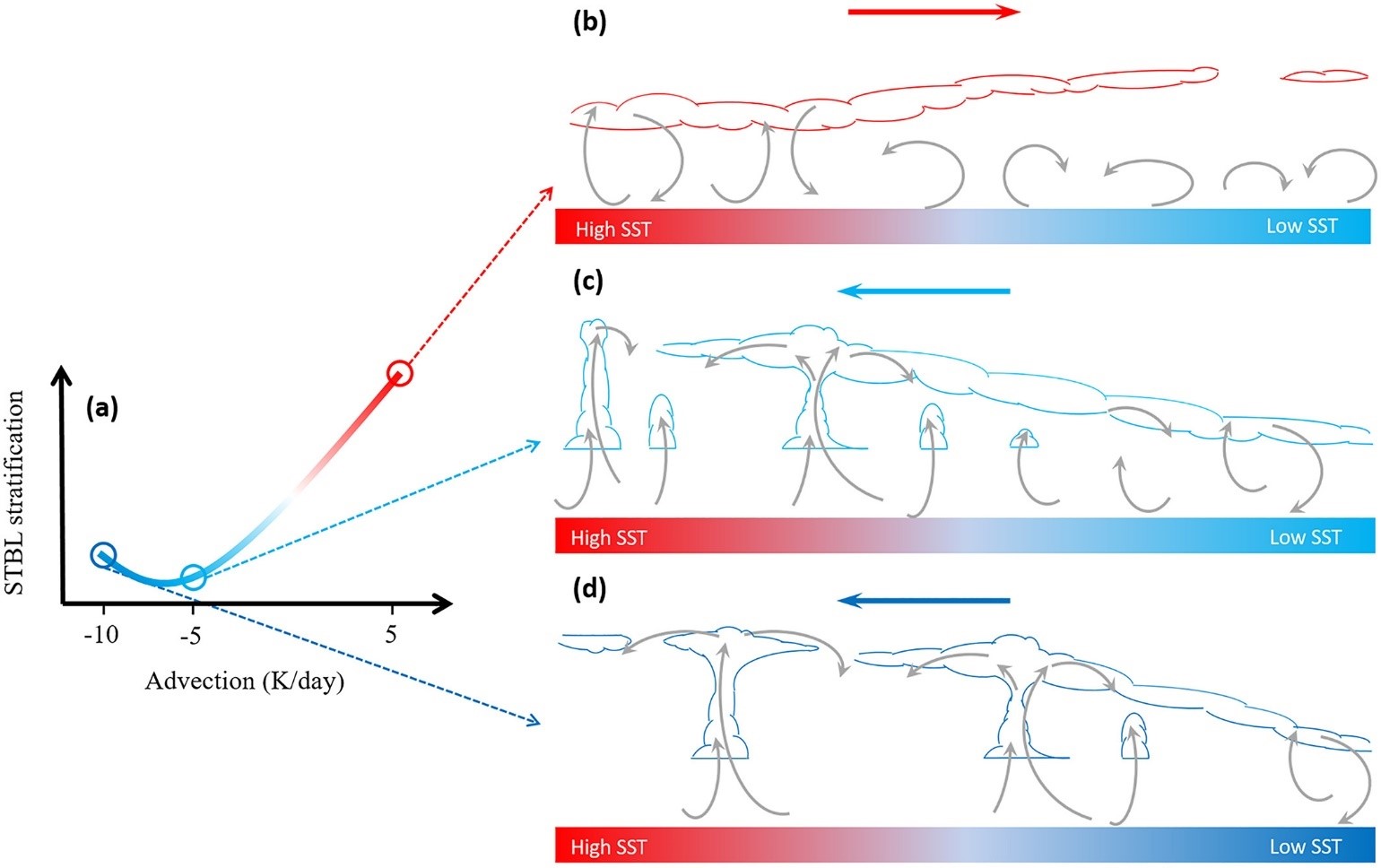
Among milestones of the ASR project, Li pointed to a 2020 paper led by Zheng that outlined a newly discovered mechanism of cloud-surface decoupling―one that is due to horizontal warm-air advection as clouds move from a region of warm water to one of cold water. (Advection is a term for the horizontal or vertical movement of a mass of air that can change the properties of the air.)
Most previous studies of the coupling between low-lying marine clouds and the sea surface have focused on the subtropics, where clouds move from cold water to warm water. The consensus understanding is that this cold air advection decouples the clouds from the sea surface.
The Zheng-Li study challenges that idea. They argue cold-air advection still displays a form of coupling by way of a conduit formed by shallow cumulus clouds. They also argue that unambiguous cloud-surface decoupling only occurs as clouds move from warm water to cold water.
Such warm-air advection occurs frequently in the Southern Ocean, where clouds move from a warm to a cold polar region. (This dynamic was borne out by ship-based MARCUS data.)
From there, the authors expand their argument to include cloud formation in other regions, including the northeast Pacific (using data from the Marine ARM GPCI Investigation of Clouds, or MAGIC, field campaign) and the North Atlantic (using ARM data from the Clouds, Aerosol, and Precipitation in the Marine Boundary Layer, or CAP-MBL, campaign).
The study, says Li, “deepens our fundamental understanding of the physics of shallow clouds and their interactions with their environments.”
From there, he adds, future predictions of the role of such clouds in climate change will be “more confident.”
Evolving ASR/ARM Fields
Li’s research interests (and his influential contributions) touch widely on the numerous ASR and ARM disciplines tied to the Earth’s energy and water cycles, atmospheric and terrestrial environment, and more.
With around 350 peer-reviewed publications, he has studied the Earth’s radiation budget, cloud microphysics and 3-D distributions, aerosol in situ and satellite observations and climate effects, air pollution, ultraviolet radiation and ozone, wildfire monitoring and mapping, vegetation monitoring, remote sensing techniques, and mountain and polar meteorology.
Aerosols are at the heart of the large, expanding universe of Li’s major research. A list of his related accomplishments includes studies of aerosols, clouds, precipitation, the Earth’s radiation budget, and aircraft and spacecraft data retrieval, modeling, and analysis.
“I am very grateful. I can pursue all my interests.”
– Zhanqing Li on U.S. Department of Energy funding
Cloud Absorption and Earth’s Radiation
Historically, Li has had a leading role in studies of the Earth’s radiation budget. Very early, in 1991, he developed a suite of satellite inversion algorithms to retrieve the solar radiation budget. One algorithm has been applied to NASA satellite (ERBE and CERES) data to produce measurements of the surface and atmospheric radiation budget.
Li’s estimates, reported in 1993, drastically increased the amount of global atmosphere-absorbed radiation from 57 watts per square meter, the standard in the 1990s, to 83 watts per square meter, which is more like estimates in place today. That upward bump of 25 watts per square meter amounted to about a sixfold increase in the radiative effect, if carbon dioxide concentrations were to double.
These estimates, coincidently, were at par with the magnitude of what was back then the cloud absorption anomaly (CAA). That’s the underestimation of cloud-absorbed solar radiation by radiative transfer models. In 1995, Li helped rejuvenate a 50-year debate over the CAA when a series of papers in Science, written by several authors, argued in favor of reporting a CAA of this magnitude.
Through a dozen studies devoted to the CAA, Li was among prominent representatives of the side of the debate who held that the CAA did not really exist―and that radical recalculations of cloud impacts on the atmosphere’s radiation were not necessary.
In a landmark Nature paper in 1995, Li disputed the CAA claim and pointed to other causes, which were confirmed in his later studies. (Among these causes were an underestimation of water vapor absorption and a lack of aerosol absorption in most climate models.)
To resolve the CAA debate, an ARM field experiment took place at SGP in 1995 called the Atmospheric Radiation Enhanced Shortwave Experiment (ARESE). The CAA at first appeared to be affirmed by the experiment, but Li found a serious instrument problem that motivated a follow-on experiment, ARESE II.
In 2000, ARESE II demonstrated a much smaller difference between models and observations. (Li attributed the difference to an inhomogeneous surface albedo.) Beyond that, he and others found deficiencies in different CAA studies.
Altogether, the long-debated CAA idea was finally resolved, as Li showed in publications from 2003 (a letter in Science) and 2004 (a book chapter). Ever since, no CAA has been reported.
The ‘Missing Agent’
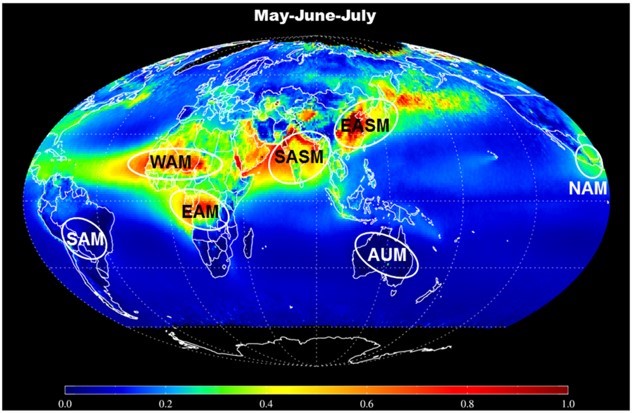
What were once widely accepted pro-CCA views, says Li, left out a “missing agent”: absorbing aerosols. Only scattering aerosols, he notes, were considered in GCMs in the early 1990s.
Since then, Li has devoted himself to a wide range of aerosol-related studies. He has investigated the remote sensing of aerosol properties, aerosol-radiation effects, and the effects of aerosol-cloud interactions. All of these remain major sources of uncertainty in the predictive acuity of climate models.
Aerosols can have long-term impacts on the properties of deep convective clouds, as well as on precipitation and the vertical development of clouds, as Li showed in a 2011 paper.
Early in his career, Li had a deepened interest in anthropogenic aerosols, which are largely due to pollution. They can delay but intensify heavy rainfall, as revealed in China, where pollution is exceptionally strong and varies considerably in space and time.
Li calls East Asia, with China at its heart, “a region of heavy aerosol loading with distinct and complex properties.” That makes his native country, he adds, an ideal testbed for exploring aerosol-climate interactions that affect the energy and water cycles.
Before the early 2000s, there were few aerosol measurements available from China. That led Li to pilot some joint China-United States research projects.
In 2005, he oversaw the East Asian Study of Tropospheric Aerosols: An International Regional Experiment (EAST-AIRE).
“We were studying aerosols as they come in from the deserts and plateaus to the west,” recalls ASR program manager Jeff Stehr, who traveled to China then as a research scientist at the University of Maryland. “They acquired a modern industrial sooty coating and a whole bunch more acidic and sooty cousins and rolled out over the South China Sea. These aerosols were having a tremendous impact on rainfall and climate in the area that we’re still learning about.”
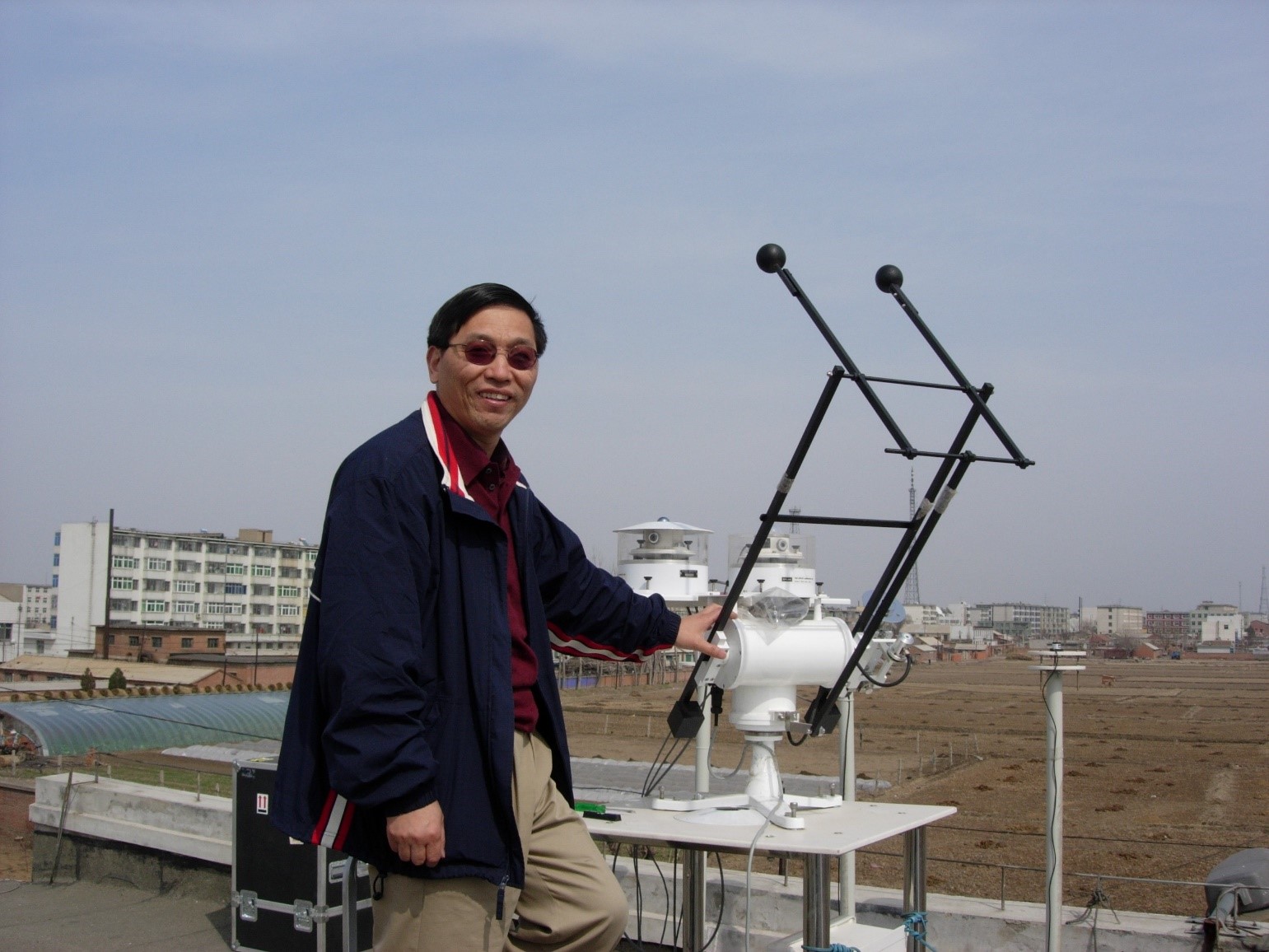
Back then, Li was both lead scientist and cultural guide “in a country where you’re completely illiterate,” adds Stehr. “You can’t read, write, or speak the language. You’re in the middle of the most populated country in the world that is changing incredibly fast. It’s sunny, dusty, and cold. But we did some great science and had the adventure of a lifetime.”
In 2008, Li led an ARM field campaign to investigate the effects of aerosols on what was then China’s fast-changing atmosphere. Included was an ARM Mobile Facility deployment.
East Asia and Aerosols
Li’s efforts in China led to rich measurements and knowledge. (There are over 100 papers in three Li-led special issues in JGR-Atmosphere, for instance.) Such research is essential for filling in big gaps in our understanding of how aerosols affect regional and global climate and environment.
Along the way, Li helped stir up a once-sleeping field for those who study aerosol influences in East Asia. Those influences are a repeated theme in his current research.
With Jiwen Fan at Pacific Northwest National Laboratory in Washington state, Li coauthored a 2018 paper in Science on convection and precipitation enhancements due to ultrafine aerosols. They acknowledged the support of both ASR and ARM’s 2014―2015 Green Ocean Amazon (GoAmazon) field campaign.
Li led a 2019 paper on aerosols and their impacts on regional climate patterns in monsoon-active, aerosol-laden East Asia. In 2020, he wrote an article in Eos on how East Asian aerosol-climate investigations are intensifying.
Li called studies of aerosols in general “a fast-developing discipline―arguably the fastest in the Earth sciences.”
In Eos, he also noted a tenfold increase in related publications since the 1990s and a hundredfold increase in his native China since 2000, when only a handful of papers were published on this important aerosol region.
‘Studies Were Very Tough’

Li’s elementary and high school education was shortened from 12 years to nine because of constraints imposed during China’s Cultural Revolution (1966 to 1976).
Born in 1963, Li helped his parents on the farm from age 7 on, cutting grass for cattle and harvesting grain. He spent just two years in high school, where chemistry was his favorite subject.
In 1979, at age 16, Li was admitted to a top-ranked meteorology institute in Nanjing, which later became Nanjing University of Information Science and Technology (B.Sc. 1983, M.Sc. 1986). He was part of a third annual wave of students to return to university after a decade of shuttered institutions of higher learning.
Pent-up academic competition was fierce. The year Li started college, only 4% of high school graduates were admitted.
He entered college thinking meteorology would be easy, since he had observed data-gathering at the met station near his home. (Technicians in those days, for one, used patterns of animal behavior to forecast the weather.)
Instead, “I was shocked when we had to study so deeply into science,” Li says, remembering days when after-class sessions routinely went until midnight. “Studies were very tough, but I enjoyed them.”
Dormitories were only for sleeping and eating. Social life was scant. By graduation, when Li was 20, only two students in his class of around 40 were admitted to master’s degree programs. Li’s own master’s degree research, on mountain meteorology, resulted in seven papers.
After a brief stint at the National Meteorological Center in Beijing (1986-1987), Li moved to Canada for doctoral studies at McGill University (PhD 1991). He investigated atmospheric and ocean science under the guidance of cloud and aerosol researcher Henry Leighton.
Li’s first research was on polar meteorology, where he investigated how to use satellite imagery to identify polar clouds. (They are hard to see because of the matching brightness of snow-covered surfaces.) It was the subject of his first North American paper.
More projects followed on remote sensing techniques and the radiation budget―work that Li says was invaluable for his later ASR and ARM work.
Three Pivot Points

After completing his PhD, Li remained in Canada for nearly 10 years before getting an offer in 2000 from the University of Maryland, College Park. When he arrived in the spring of 2001, he became, right away, a tenured full professor.
During the Canadian years, Li was busy researching, modeling, and publishing work that formed the core focus of his career.
Fire was part of that. One 1997 paper monitored fire activity and weighed in on the dynamics of wildfires in western Canada’s boreal ecosystem. As a research scientist (1992-2001) at Natural Resources Canada, he led the development of the award-winning Fire Monitoring, Mapping and Modeling (Fire M3) system.
It was the first operational system used across North America to identify and map fires daily. Some of Li’s methods have been adopted in modern fire algorithms.
Such work relied heavily on satellite data and, in turn, on the retrieval algorithms Li developed to overcome the deficiencies of ground observations.
It was studying how to distinguish smoke from clouds that piqued Li’s first deep interest in aerosols.
Today, there are three pivot points to his work, spelled out in 10 letters: ARI, ACI, and ARCI:
- Aerosol and radiation interactions (ARI) have variables that are difficult to measure. “They can be quantified, fortunately, much more feasibly and accurately under clear-sky conditions,” says Li, “which are more significant than cloudy conditions.”
- Aerosol and cloud interactions (ACI) comprise a complicated puzzle whose shape is easier to estimate than its size.
- Aerosol-radiation-cloud interactions (ARCI) are the most challenging, says Li, but remain “the most essential to fully understand the broad impacts of aerosols on the water cycle.”
Li praised ASR, ARM, and DOE in general for funding his work so steadily even before he was at work in Maryland.
“I am very grateful,” he says. “I can pursue all my interests.”
These include serving on the Board on Atmospheric Sciences and Climate at the National Academies of Sciences, Engineering, and Medicine.
“In return,” adds Li, “I will strive to safeguard the interests of ASR and ARM researchers, along with others.”
# # #Author: Corydon Ireland, Science Writer, Pacific Northwest National Laboratory
This work was supported by the U.S. Department of Energy’s Office of Science, through the Biological and Environmental Research program as part of the Atmospheric System Research program.

